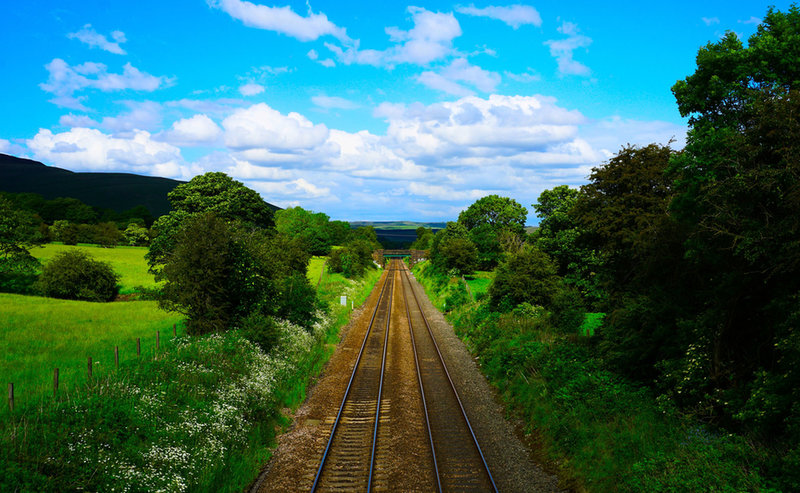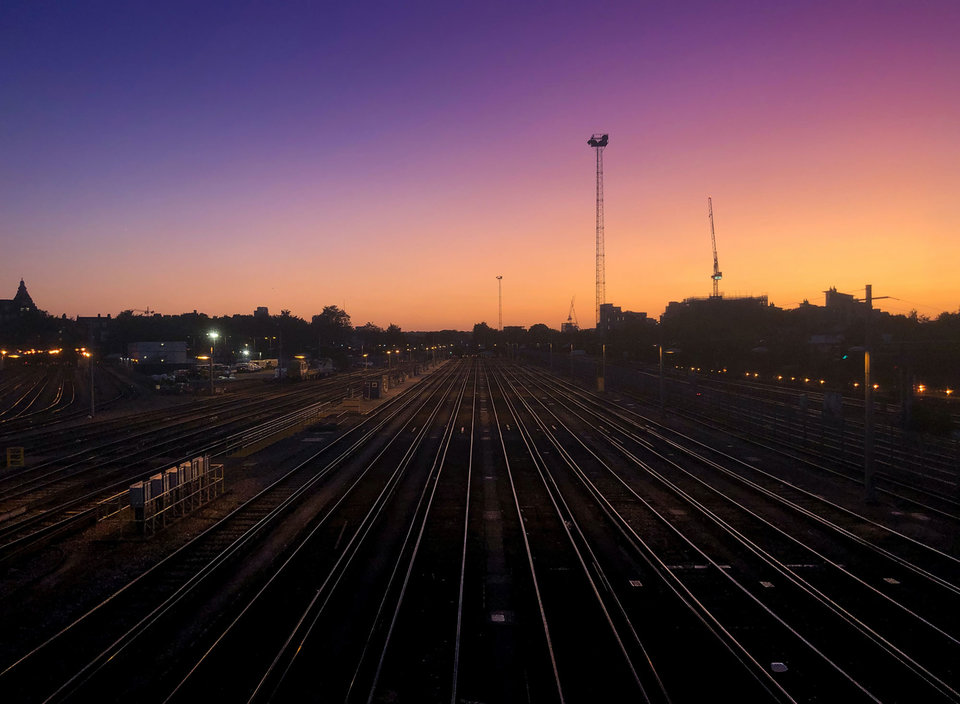Environment
Inside Network Rail’s global warming action plan
Rail innovation: is Australia falling behind?
Shortly after releasing its 2020-2050 Environmental Strategy, UK infrastructure manager Network Rail made history for becoming the first rail company in the world to set ambitious science-based targets to limit global warming within the framework of the Paris Agreement. But exactly how ambitious are these targets, and what is Network Rail’s plan to meet them? Alex Love finds out.
Network Rail’s commitment to reducing greenhouse gas emissions goes even further than the 2015 Paris Agreement. Under this deal, global leaders agreed that everything must be done to stop global temperatures rising 2˚C above pre-industrial levels in order to prevent the worst effects of climate change. Yet Network Rail’s plans are in line with keeping that temperature rise to 1.5˚C.
As with all efforts to tackle carbon emissions, it will take multiple initiatives instead of just one magic fix. But Network Rail is leading the way, becoming the first railway company in the world to commit to science-based targets
Network Rail’s Environmental Sustainability Strategy 2020-2050 has four core priorities. These are: to achieve a low-emission railway; to deliver a resilient and reliable railway service capable of withstanding the effects of climate change; improve biodiversity throughout the network; and use sustainable materials while minimising waste. Throughout the strategy are also commitments to improving air quality across operations.
The methods to achieve these green objectives have been independently verified by the Science Based Targets Initiative (SBTi), a partnership between the United Nations Global Compact, World Resources Institute, and charities WWF and CDP, which runs the global disclosure system.

Aerial view of the derailment. Image: UK Government
Emissions reduction targets
There are three categories of emissions that Network Rail has plans to address. Scope 1 covers emissions produced by the company directly, such as from its vehicles, energy used in its buildings and on-site machinery.
Scope 2 covers indirect emissions from energy purchased by Network Rail to power its stations, facilities and operating systems, while Scope 3 is from sources largely beyond Network Rails control, such as the supply chain, manufacturing and construction.
The science-based targets for Scope 1 and 2 involve a 25% cut in emissions by 2024 from present levels, which increases to a 46% reduction by 2029. The latter year is also the target for halving carbon emissions from infrastructure based on current figures.
By 2034, reduction targets from Scope 1 and 2 will rise to 65%, with carbon reductions from infrastructure amounting to 75%. Scope 1 and 2 targets then increase to 79% by 2039 and climb a further 20% over the subsequent decade.
An estimated two-thirds of Network Rail’s emissions come from suppliers.
However, potential problems arise with Scope 3. An estimated two-thirds of Network Rail’s emissions come from suppliers, including construction and manufacturing, as well as the fuel it buys such as diesel. One of its Scope 3 targets is to reduce traction diesel emissions by 27.5% by 2029.
Network Rail says it is also working with suppliers to create further carbon reduction strategies such as reusing materials as much as possible through the circular economy. It is also looking at its procurement practices to identify areas for improvement and ways it can exert a greater influence on third-party operations.
And while Network Rail is responsible for operations and maintenance of the UK’s railway infrastructure, it is not involved with the purchasing or operating of trains that run services on the network. To achieve changes in this area, Network Rail will have to work with train owners and operators to shift to greener technologies and cut pollutants in areas such as stations.
The plan is for passenger rail to be fully decarbonised in Scotland by 2035, with England and Wales following in 2040.

Network Rail has plans to meet science-based targets to reduce emissions. Credit: Jon Buttle-Smith | Unsplash.
Green plans
Renewable energy is a big part of all carbon reduction projects, and Network Rail is already using these sources to power some of its buildings, stations and depots.
The company is now also looking into building renewable energy infrastructure on its land by using a geo-spatial database to identify the best positions for both generation and storage, although did not respond in time to confirm how much energy would be generated.
In addition, Network Rail has started trialling electric vehicles, including maintenance vans. And by 2034, it plans to have a fleet entirely of ultra-low emission vehicles.
Network Rail has also set a zero net loss target for biodiversity by 2024. The company is confident that its suite of environmental initiatives will allow it to achieve the UK Department for Transport’s (DfT) 2040 biodiversity net gain target five years ahead of schedule.
Instead of merely clearing vegetation away from the tracks, Network Rail is working to enhance and maintain the biodiversity of surrounding land so that wildlife can flourish, as well as protecting the railway from hazards such as fallen trees or stray branches.
Network Rail has set a zero net loss target for biodiversity by 2024.
The 52,000ha owned by Network Rail covers a diverse range of landscapes, from coastal to grasslands. Habitats will be measured, mapped and monitored using satellites. And successful land management trial programmes will be extended and expanded.
Although mass tree planting is an integral part of the strategy, these young trees will take decades to equal the amount of CO2 consumed by the much older trees that have been chopped down previously.
However, planting more trees will take more carbon out of the air, while also consuming greater quantities of groundwater to help reduce the chances of services being disrupted by flooding.
In 2015, flooding from Storm Eva caused widespread disruption around Leeds, forcing the three-day closure of the rail services running through Kirkstall in West Yorkshire. Delays and cancellation charges cost Network Rail £33,000.
And such events are only expected to increase with a warming climate and unstable weather patterns. For example, railway services running through Kirkstall Bridge have been severely disrupted by flooding on ten occasions since 2003, with four of these events in 2015 alone.
Network Rail has been working alongside local authorities and the Environment Agency in flood alleviation works to provide greater resilience against extreme weather.
Government support
Network Rail’s Environmental Sustainability Strategy was originally published in October 2020. It has been handed to the UK Government to suggest the best methods of decarbonising the rail network, aiding decision-making for the scope and time frame.
The report makes a number of references for the need for government support to achieve its objectives, as Network Rail is funded by the British taxpayer. It states: “Our ambitions require government investment, but if supported, could accelerate the rail industry’s transition to achieve ‘net-zero’ carbon well before the governments’ targets of 2050 in England and Wales and 2045 in Scotland.”
Network Rail says it needs government support to expand the amount of electrification on the railway network further than the existing 42%. In the last three years, NETWORK RAIL has electrified 700 single-track miles, and more is certain to follow.
Yet the DfT and HM Treasury are among those ultimately responsible for deciding how much happens next. For electrification of main line routes, the final investment decision is due by 2029.
We must do everything we can to make rail journeys cleaner, greener and more efficient.
While the DfT did not go into specifics about exactly how much track will be electrified in future, it did point out that rail electrification is a vital part of achieving its net-zero 2050 goals. Other technologies that will be used on the network to achieve decarbonisation include trains powered by hydrogen and batteries.
A DfT spokesperson emphasises that through the government’s transport recovery plan “we must do everything we can to make rail journeys cleaner, greener and more efficient”.
“We fully support Network Rail’s environmental strategy, which will ensure they continue to tackle climate change, help build an economy that is more sustainable and resilient, and deliver cleaner air and lower carbon emissions,” the DfT spokesperson adds.
Later this year, the DfT will reveal its strategy for reducing the rail network’s carbon footprint, as well as other modes of transport, in its Transport Decarbonisation Plan.
Main image credit: Unsplash | Felix